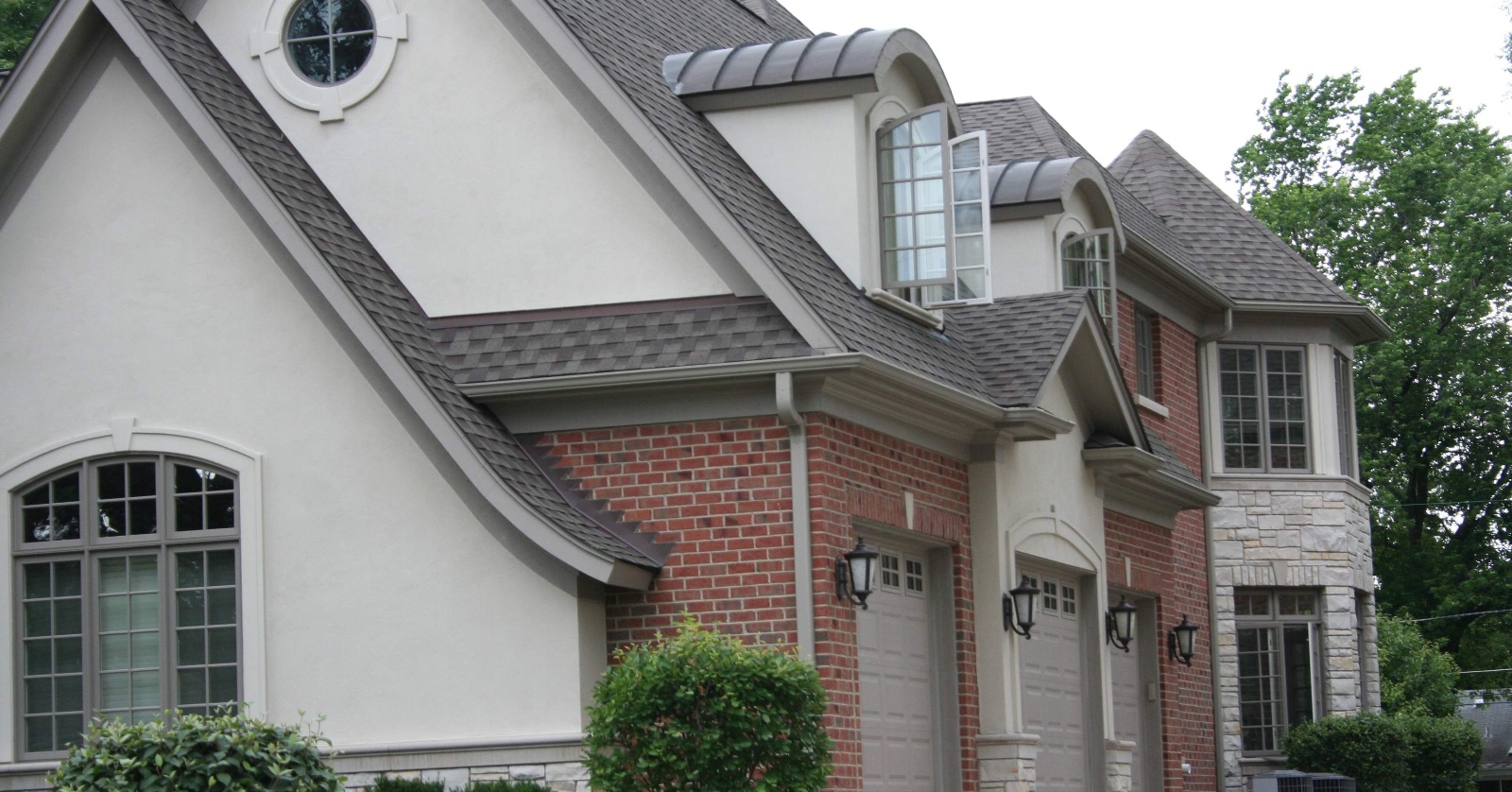Its Time for Your Annual Spring Check Up

Winter may have loosened its grip, but don't let your guard down just yet! As the vibrant hues of spring paint the landscape, it's the perfect time to shift your focus from hibernation to home rejuvenation. While snuggling under blankets held its charm, our homes have weathered the brunt of winter's wrath. Now, spring cleaning isn't just about dusting bunnies; it's about a crucial ritual called home maintenance.
Just like you go to the doctor for regular checkups, giving your home TLC in spring helps prevent future problems. Early intervention is key – it's cheaper to fix a leaky faucet now than to deal with water damage later! Regular maintenance extends the lifespan of your home's systems and appliances, saving you money in the long run. Consider it an investment in your home's health and your own peace of mind.
This checklist will empower you to tackle essential home maintenance with confidence and ease.
Spring Maintenance Checklist
1. Grounds and Yard
- Clear Drains: Eliminate debris and leaves from area wells, window wells, and storm drains to prevent water pooling and potential flooding. Ensure clear pathways for rainwater to flow freely.
- Crack Down on Damage: Inspect your driveway and sidewalks for cracks, noting their size and location.
Check your yard for signs of settlement or soil erosion, which could indicate drainage issues.
2. Doors and Windows
- Inspect the Finish: Look for peeling paint, cracking varnish, or warped wood on doors, windows, and trim. Identify areas needing touch-ups or repairs to prevent further damage.
- Glaze Check: Inspect glazed openings for loose putty that could allow moisture infiltration. Address any loose putty to prevent leaks and potential water damage.
- Broken Glass & Screen Patrol: Check for cracks, chips, or missing pieces in your window panes. Ensure screens are free of tears and holes and securely attached for optimal ventilation.
- Weatherproof Your Seals: Examine weather stripping around doors and windows for damage or gaps. Replace worn-out stripping to ensure a snug fit and prevent air leaks.
- Caulk It Up: Inspect caulking around doors, windows, and other openings for cracks or deterioration. Re-caulk where necessary to create a watertight seal and prevent drafts.
- Bonus Tip: Deep clean doors and windows to remove dirt and grime, enhancing their appearance and functionality.
3. Exterior Walls:
- Masonry: Inspect brick, stone, or other masonry for cracks, loose mortar, or missing pieces. Address any issues promptly to prevent water infiltration and further damage.
- Peeling Paint: Check painted surfaces for signs of blistering, chipping, or peeling paint. Repair minor imperfections or repaint affected areas to maintain curb appeal and protect your home's exterior.
- Siding & Trim: Inspect the siding and trim for damage like warping, rot, or insect infestation. Replace or repair damaged components to ensure your home's weatherproofing and structural integrity.
- Bonus Tip: Clean your exterior walls with a suitable cleaning solution to remove dirt, grime, and cobwebs, leaving your home sparkling clean.
4. Roofing:
- Shingle Inspection: Inspect for damaged, loose, or missing shingles and immediately address any issues to prevent leaks.
- Water Stains: Check accessible areas of the roof deck for water stains or dampness, indicating potential problems.
- Flashing: Examine flashing around chimneys, vents, and other roof penetrations for damage and ensure proper sealing.
- Gutters: Clear debris from gutters and downspouts to ensure proper drainage and prevent water damage. Inspect gutters, downspouts, hangers, strainers, and rust for damage and repair or replace as needed.
- Vent Ventilation: Check vents, louvers, and chimney caps for bird nests and debris that might be obstructing proper ventilation. Ensure clear airflow through these ventilation points to prevent moisture buildup and potential damage.
- Trim & Fascia: Inspect fascias and soffits for paint failure or decay and touch up where needed. Address any damage to fascia boards and soffits to protect your home's structural integrity.
- Chimney Check: If you have a masonry chimney, inspect for cracks, loose bricks, or other signs of damage and schedule repairs if necessary.
- Bonus Tip: Consider contacting a professional roofer for a thorough inspection, especially if you're not comfortable climbing on your roof.
5. Interior Surfaces
- Tiled: Carefully inspect all joints in ceramic tile, laminate plastic, and similar surfaces for cracks, chips, or missing grout. Address any issues promptly to prevent moisture infiltration and damage.
- Shower Seal: Inspect grouting around tubs, showers, and sinks for stains, cracking, or crumbling.
Clean and re-caulk as needed to ensure a watertight seal and prevent potential water damage. - Bonus Tip: Deep clean your tile and grout with appropriate cleaning solutions to remove dirt, grime, and soap scum for a refreshed appearance.
6. Flooring:
- Wear and Tear: Inspect your flooring thoroughly, paying attention to areas with high traffic or potential wear, like entryways, walkways, and around furniture. Look for signs of damage like scratches, dents, loose tiles, warping, or discoloration.
- Materials Matter: Identify the type of flooring you have (wood, tile, laminate, etc.) and determine the best way to evaluate its condition.
- Wood floors: Check for loose boards, creaking, or water damage. Consider sanding and refinishing if needed.
- Tile floors: Look for cracked or loose tiles, especially around grout lines. Repair or replace as necessary.
- Laminate floors: Inspect for chips, peeling, or water damage. Replacement might be needed for heavily damaged areas.
- Bonus Tip: Based on the extent of damage and your budget, decide if refinishing, repairing, or replacing specific areas or the entire floor is necessary. Consider professional intervention for extensive damage or if unsure about DIY solutions.
7. Plumbing:
- Leaks: Inspect all faucets, flush handles, hose bibs, and exposed pipes for leaks, drips, or signs of moisture damage. Tighten loose connections and repair or replace leaky components promptly to prevent water waste and potential damage. Don't forget to check pipes in your basement or crawl space, where hidden leaks can cause major issues.
- Septic Smarts: Consult your local regulations or maintenance professional to determine how often you need to have your septic tank inspected and pumped. Avoid DIY maintenance unless you have the expertise, and always prioritize professional assistance for your septic system.
- Water Heater: Check your water heater's pressure relief valve according to the manufacturer's instructions to ensure proper functioning. Inspect the tank for leaks or signs of rust and consider professional maintenance if necessary. Think about the age and efficiency of your water heater. If it's nearing the end of its lifespan, consider upgrading to a more energy-efficient model.
- Bonus Tip: Invest in a water filter to improve the quality and taste of your drinking water.
8. Electrical System
- Cords: Inspect all lamp cords, extension cords, and plugs for signs of wear or damage, such as fraying, cracks, or loose connections. Replace any damaged cords immediately to prevent fire hazards.
- Exposed Wiring: Check overhead and exposed wiring for signs of damage or missing insulation.
Never attempt to repair electrical issues yourself. To ensure safety, contact a qualified electrician to address any exposed or damaged wiring. - Frequent Fuses & Tripping Breakers: If fuses blow or breakers trip frequently, don't ignore it! This could indicate a serious electrical problem. Call a licensed electrician immediately to diagnose the issue and make necessary repairs to prevent potential electrical hazards.
- GFCI Test: Test your Ground Fault Circuit Interrupters (GFCIs) located in bathrooms, kitchens, and other potentially wet areas. Press the test and reset buttons according to the manufacturer's instructions. If they don't function properly, have a professional electrician replace them.
- Bonus Tip: Label your circuit breakers clearly to easily identify which circuit controls each area of your home. This can be helpful in troubleshooting future electrical issues.
9. Heating and Cooling System
- Air Filter: Clean or replace your air filters regularly (monthly for high-use periods) to ensure optimal airflow and air quality. Follow the manufacturer's recommendations for specific filter types and replacement schedules.
- Furnace: Clear away dirt and dust from around your furnace to prevent overheating and potential fire hazards.
Hire a qualified professional for comprehensive furnace cleaning and maintenance. - Humidity (If you have a humidifier or dehumidifier): Schedule annual servicing to ensure proper functionality and optimal moisture levels in your home. Clean or replace filters as needed according to the manufacturer's instructions.
- Bonus Tip: Schedule an annual inspection by a qualified technician for both your heating and cooling systems. Early detection of minor issues can prevent major breakdowns and costly repairs down the line.
10. Foundations and Basements
- Termites: Schedule an annual termite inspection by a qualified professional to detect and prevent potential infestations. Early intervention is crucial. Don't wait for signs of damage before addressing this threat.
- Drainage: Inspect the grading around your foundation. Water should flow away from your home, not towards it. Address any unevenness or grading issues to prevent water pooling and potential foundation damage.
- Basement & Crawlspace Checkup: Following wet weather, inspect your basement or crawlspace for any signs of dampness or leaks. Look for water stains, musty odors, or standing water. These could indicate foundation cracks, drainage problems, or plumbing leaks. Address any moisture issues promptly to prevent mold growth and structural damage.
- Bonus Tip: Seal cracks and gaps around your foundation to prevent water infiltration and pest entry.
Conquer Spring with this Home Maintenance Checklist
(and Beyond!)
Spring isn't just about blooming flowers and sunny days – it's also prime time for a home checkup! This essential spring maintenance checklist helps you identify potential problems before they blossom into expensive headaches. But remember, checking isn't enough – action is key.
Does your home need some TLC? Breathe new life into your home and embrace deferred maintenance as a chance to reimagine your dream living environment. Start the process by downloading this eBook, "The Ultimate Step-by-Step Home Renovation Transformation Guide."
Patrick A. Finn Service Area

